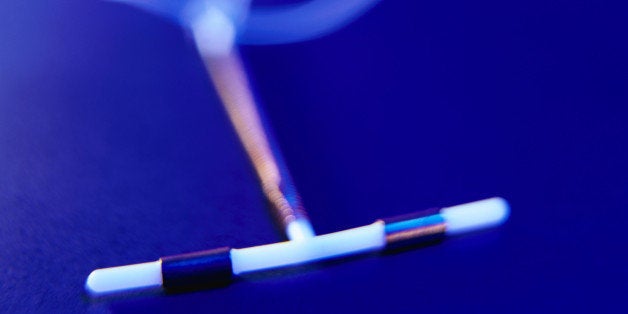
Rates of teen pregnancies and abortions have plunged in Colorado thanks to a six-year program that distributed free LARCs -- long-acting reversible contraceptives -- to teens and young women.
The initiative provided women with free IUDs (intrauterine devices) or hormonal implants that can prevent pregnancy for up to 10 years, resulting in a 40 percent decline in birthrates among teen moms and a 42 percent decline in teen abortions from 2009 to 2013, reported The New York Times.
While teen pregnancy has decreased nationwide, an estimated 37 percent of all pregnancies in the U.S. are unintended, which can have serious health ramifications for mother and baby -- as well as high economic and social costs for the new family.
"The findings from the Colorado study are exciting, and highlight the importance of removing barriers to LARC use for all women, but in particular those at high risk of unintended pregnancy, such as adolescents and poor women,” said Dr. Maria Rodriguez, an assistant professor of obstetrics and gynecology who specializes in family planning at Oregon Health & Science University, but was not involved in the Colorado LARC experiment.
In addition to being free, the program’s stunning success can be partly attributed to LARCs’ superior effectiveness rate. Short of permanent sterilization, IUDs and hormonal implants are the most fool-proof way to protect against pregnancy, with failure rates of less than one percent. Condoms, on the other hand, have failure rates of 18 to 21 percent with average use, while the pill, the patch and the ring have failure rates of nine percent.
The use of LARCs has increased nearly fivefold in the last ten years, according to a February 2015 report from the Centers for Disease Control and Prevention. In 2002, only 1.5 percent of women ages 15 to 44 used them, but by 2013 that rate was up to 7.2 percent. LARCs are most popular among women ages 25 to 34, as well as among women who have already given birth to at least one child, according to the CDC report. But Colorado’s example shows that the effects of long-acting birth control may have the most positive impact on teens, who are freed to finish school and begin their careers before contending with parenthood.
Unfortunately, teens aren’t using LARCs at the same rates as older women, most likely because of the high upfront cost associated with the devices and unfounded fear and misunderstanding of LARCs, according to a recent CDC report.
For women without insurance, both IUDs and hormonal implants can cost up to $800 to insert (not including the costs of the doctor’s exam). Both methods last for several years and are actually cheaper than the cost of, say, the birth control pill over the same time period, but the upfront cost is steep.
The same CDC report cited a nationally representative survey of publicly-funded family planning clinics, which revealed that “staff concerns about IUD use among teens” as well as the staff's lack of training on how to insert implants and IUDs, could also be contributing to low rates of LARC use among teens.
In fact, information about LARCs is sorely needed for all age groups. A study published in the Lancet in June found that by simply re-structuring a health center's educational outreach to include information on the effectiveness of IUDs and hormonal implants, Planned Parenthood clinics were able to almost halve the rate of unwanted pregnancies, as compared to women who continued to receive the standard talk on birth control.
